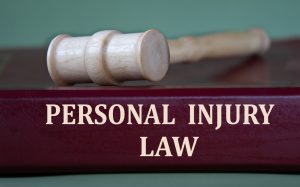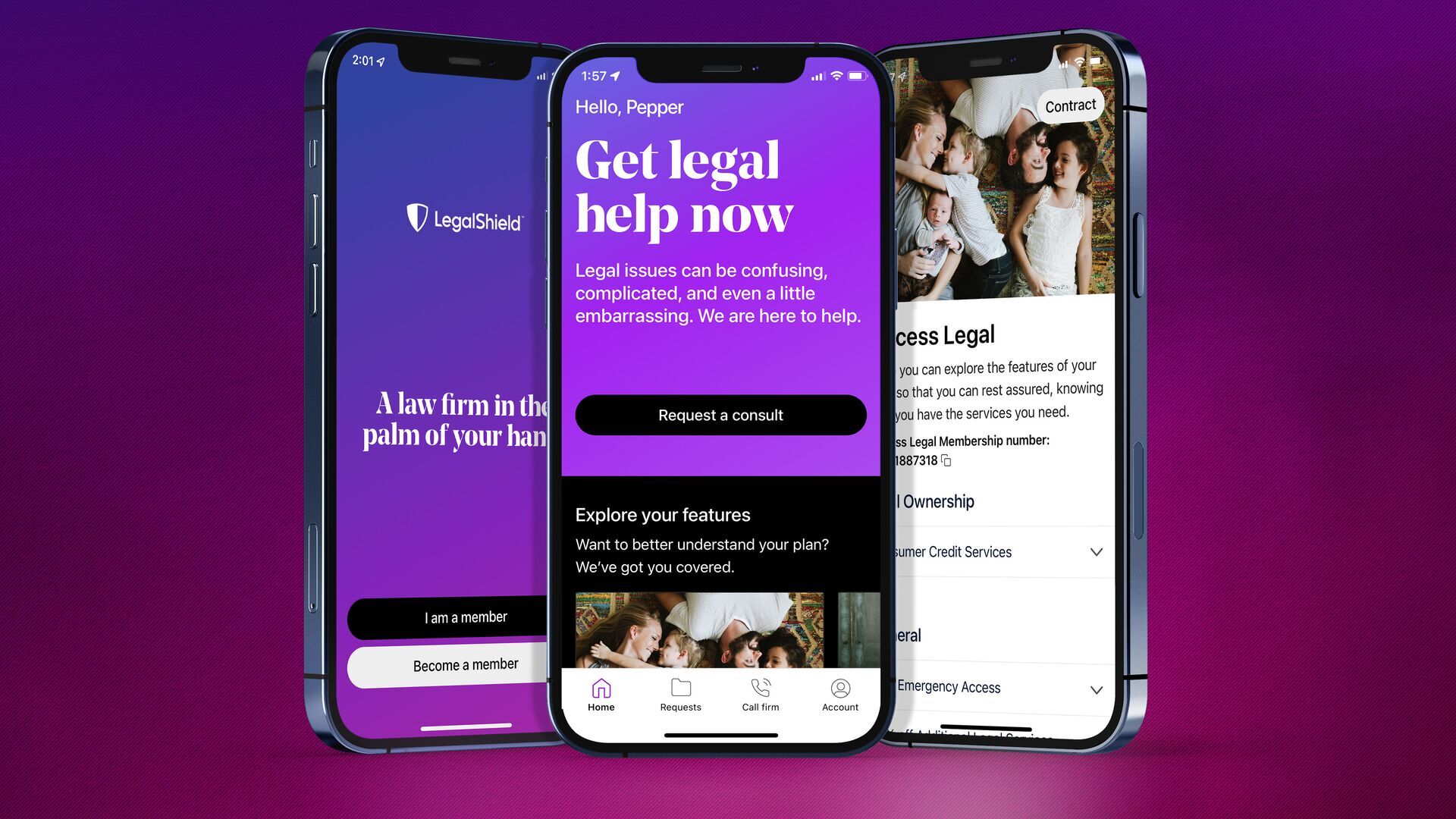Personal injury cases often involve complex legal battles, and insurance companies employ various strategies to minimize their payouts. Understanding the common defenses used by these companies can significantly influence how a claimant navigates their case. Many insurance companies will assert that the injured party shares some responsibility for the accident, which can reduce their liability.
Understanding Personal Injury Law
Personal injury law revolves around the concept of allowing individuals to seek compensation for harm caused by others. Key components include negligence and liability, both critical in determining the validity of claims.
Concept of Negligence
Negligence is the cornerstone of many personal injury cases. It refers to the failure to act with reasonable care, resulting in harm to another person.
To establish negligence, four elements must be proven:
- Duty of Care: The defendant had a legal obligation to ensure safety.
- Breach of Duty: The defendant failed to meet that obligation.
- Causation: The breach directly caused the injury.
- Damages: The plaintiff suffered actual harm or loss.
Each element must be clearly demonstrated for a successful claim.
Role of Liability in Injury Claims
Liability determines who is responsible for the injury and to what extent. In personal injury cases, it can be assigned to one or multiple parties.
Types of liability include:
- Negligent: Directly linked to careless actions.
- Strict: Applicable in cases involving inherently dangerous activities.
- Vicarious: Employers may be liable for employees' actions during their duties.
Understanding liability aids in evaluating the strength of a case and the potential recovery amount.
Insurance Companies and Personal Injury Claims
Insurance companies play a pivotal role in personal injury claims. They are responsible for evaluating claims, determining liability, and providing financial compensation to injured parties.
Duty to Defend and Indemnify
The duty to defend arises when a claim is made against a policyholder. Insurance companies are obligated to provide defense against claims even if they may later deny coverage. This duty ensures that policyholders have legal representation, typically at no cost.
Indemnification refers to the insurer's responsibility to pay for damages awarded in a claim. Insurers evaluate the claim details to determine if they must indemnify the policyholder. If a claim falls within the policy coverage, the insurer must cover legal expenses and any settlements or judgments.
The Claims Process
The claims process typically begins when an injured party files a claim with the insurance company. The insurer will gather relevant information, including police reports, medical records, and witness statements.
Once all information is collected, the insurance adjuster evaluates liability and damages. They assess the evidence to determine whether the claim is valid and the amount owed.
The adjuster's findings lead to either a settlement offer or denial. Settlement negotiations may follow before any final decision is reached.
Common Defense Strategies
Insurance companies often employ various strategies to minimize their liabilities in personal injury cases.
Questioning the Causation of Injuries
One common strategy involves questioning the direct link between the accident and the injuries claimed. Insurers may argue that the injuries were not a direct result of the incident, suggesting that other factors contributed.
They might present evidence such as:
- Medical records showing prior injuries.
- Testimonies from experts disputing causation.
This approach aims to create doubt about the legitimacy of the injury claims, which can weaken the case against them.
Arguing Pre-existing Conditions
Another prevalent defense used is the assertion that the injured party had pre-existing conditions. Insurers may investigate medical histories to find evidence of prior injuries or health issues, arguing that these conditions were responsible for the ongoing pain or disability.
Factors often considered include:
- Detailed medical records.
- Expert medical opinions.
By establishing that the injury was exacerbated rather than caused by the incident, insurers can significantly reduce their payouts.
Policy Exclusions and Limitations
Insurance policies often contain exclusions and limitations that can be used as defenses. Insurers will closely examine the terms of the policy to identify clauses that may deny coverage for specific types of claims.
Examples of common exclusions include:
- Intentional harm.
- Injuries occurring under the influence of drugs or alcohol.
By highlighting these policy stipulations, insurers seek to avoid liability altogether, making it critical for claimants to be fully aware of their policy terms.
Procedural Defenses
Procedural defenses are strategies employed by insurance companies to challenge the validity of a personal injury claim based on legal technicalities.
Statute of Limitations
The statute of limitations sets a deadline for filing a personal injury lawsuit. Each state has its own time limits, which typically range from one to six years, depending on the nature of the claim.
If a plaintiff fails to file their lawsuit within this timeframe, the insurance company may argue that the case should be dismissed. This defense aims to prevent stale claims that could be difficult to defend due to lost evidence or fading memories.
It is crucial for claimants to be aware of these deadlines, as missing them can result in losing the right to seek compensation. Legal advice is often recommended to ensure compliance with these statutes.
Failure to Mitigate Damages
In personal injury cases, plaintiffs have a duty to mitigate their damages. This means they must take reasonable steps to reduce their losses after an injury occurs.
Insurance companies frequently assert that a claimant failed to seek necessary medical treatment or did not follow prescribed rehabilitation protocols. Such claims can weaken the plaintiff's case, as courts may find that the damages could have been minimized.
Documenting efforts to mitigate damages is essential for plaintiffs. Keeping thorough records of medical treatments and rehabilitation can counter this defense effectively and strengthen the case.
Arguments on Liability
Insurance companies often contest liability in personal injury cases through specific strategies. Understanding these arguments is crucial for plaintiffs aiming to navigate the complexities of their claims.
Comparative Fault Arguments
In many jurisdictions, insurance companies adopt comparative fault arguments to minimize their liability. This strategy asserts that the injured party contributed to the accident.
For example, a plaintiff who was not wearing a seatbelt during a car accident may be deemed partially responsible. If this is the case, their compensation could be reduced proportional to their level of fault.
Key aspects include:
- Percentage of Fault: Claims may hinge on establishing a specific percentage of responsibility.
- Defense Evidence: Insurers often gather evidence to support claims of the plaintiff’s negligence.
By arguing comparative fault, insurance companies aim to shift responsibility away from their policyholder.
Denial of Liability
Another common tactic is the outright denial of liability. Insurers may claim their policyholder was not responsible for the incident, citing various reasons.
For instance, they may argue that the accident was caused by factors beyond their control, such as road conditions or actions of third parties.
Common reasons for denial include:
- Lack of Negligence: Asserting that their insured was acting reasonably.
- Procedural Issues: Disputing the validity of the claim based on procedural missteps by the claimant.
Denial can lead to prolonged negotiations and even litigation if the injured party contests the insurer’s stance.
Dealing with Low Settlement Offers
Victims of personal injury often face low settlement offers from insurance companies. Understanding how to evaluate these offers and employing effective negotiation strategies can significantly impact the outcome.
Evaluating Settlement Offers
When assessing a settlement offer, a clear understanding of the case's value is essential. This involves calculating medical expenses, lost wages, and pain and suffering.
Consider factors such as:
- Medical Bills: Total costs for treatment and future care.
- Lost Income: Earnings lost due to injury.
- Non-Economic Damages: Pain, suffering, and emotional distress.
Comparing the offer against these quantifiable items helps determine if it is fair. Seeking legal advice can provide insights, as attorneys can assess the offer's adequacy based on past settlements and jury awards in similar cases.
Negotiation Strategies
Negotiation begins by establishing a firm position based on the evaluation. Clear communication is key. It is important to express that the initial offer is inadequate, providing specific counterarguments.
Possible strategies include:
- Documenting Everything: Collect evidence that supports the claim, including medical records and witness statements.
- Counteracting with Evidence: Use documentation to substantiate claims during negotiations.
- Remaining Professional: A respectful tone can foster cooperation and a willingness to negotiate.
If the insurance company continues to undervalue the claim, it may be necessary to consider legal action as a means of resolving the dispute.
Medical Record Challenges
Medical records play a crucial role in personal injury cases. Insurance companies often challenge these records to limit their liability or diminish claims.
Requesting Independent Medical Examinations
Insurance companies frequently request Independent Medical Examinations (IMEs) to obtain a third-party assessment of the claimant's injuries. They argue that these evaluations provide an unbiased view of the medical conditions, countering the claimant's claims made by their own physicians.
An IME typically occurs at the expense of the insurer, and the chosen physician may have experience in evaluating similar claims. The findings from an IME can lead to disputes regarding the extent of injuries and treatment needs.
Claimants should be aware that IME results can significantly influence the outcome of their case. Hence, understanding the rights and obligations related to these exams is essential.
Disputing Medical Expense Claims
Insurance companies often scrutinize medical expense claims for validity and necessity. They may argue that certain treatments or medications were not required or were overly expensive.
Claimants must ensure that their medical records are thorough and well-documented to counter these disputes. Documentation should include:
- Treatment plans
- Billing statements
- Referral records
Litigation and Trial Tactics
Insurance companies employ specific litigation and trial tactics to defend against personal injury claims. These tactics aim to minimize liability, reduce settlements, and influence jury perceptions.
Expert Witness Challenges
Insurance defense teams often question the credibility and relevance of expert witnesses presented by plaintiffs. They may look for gaps in credentials or conflicting opinions from other experts. Common strategies include:
- Cross-examination: Rigorous questioning that may reveal biases or inconsistencies.
- Daubert motions: Attempts to challenge the admissibility of expert testimony based on reliability and methodology.
By undermining the plaintiff’s expert witnesses, insurance companies aim to weaken the overall case. A successful challenge can lead to a significant reduction in damages or even case dismissal.
Jury Selection and Persuasion
The jury selection process is critical in shaping the outcome of personal injury trials. Insurance companies analyze potential jurors' backgrounds and attitudes to identify favorable candidates. Key strategies include:
- Juror profiling: Assessing demographics, professions, and past experiences to predict biases.
- Challenging bias: Removing jurors who may sympathize with the plaintiff or have preconceived notions.
During the trial, persuasive storytelling is essential. Defense attorneys often employ relatable narratives, focusing on facts that resonate with jurors and framing the plaintiff in a less favorable light. This helps create doubt about liability and damages awarded.
The Role of Legal Representation
Effective legal representation is crucial in personal injury cases. Attorneys help navigate complex legal waters and advocate for clients against insurance companies.
Hiring a Competent Attorney
Choosing a competent attorney is the first step toward a successful resolution. A seasoned personal injury lawyer, particularly one specialized in nursing home abuse, understands the nuances of relevant laws.
They can identify critical evidence that supports the client's claim. For example, a Mobile, AL nursing home abuse law firm will know local regulations and standard practices, enabling them to build a stronger case. An experienced attorney also communicates effectively with insurance companies, ensuring they recognize the seriousness of the claim. This includes negotiating fair settlements without unnecessary delays.
Benefits of Experienced Counsel
Engaging experienced counsel brings numerous benefits. Knowledgeable attorneys possess a deep understanding of liability issues and can anticipate common defenses posed by insurance companies. They quickly spot weak arguments, countering them effectively.
Additionally, they are skilled negotiators, ensuring clients receive due compensation for medical expenses, lost wages, and pain and suffering. A competent lawyer also provides peace of mind, allowing clients to focus on recovery while handling all legal complexities.
Ultimately, having an expert advocate increases the likelihood of achieving a favorable outcome. Clients gain confidence in their case when represented by someone who comprehensively knows the legal landscape.





















